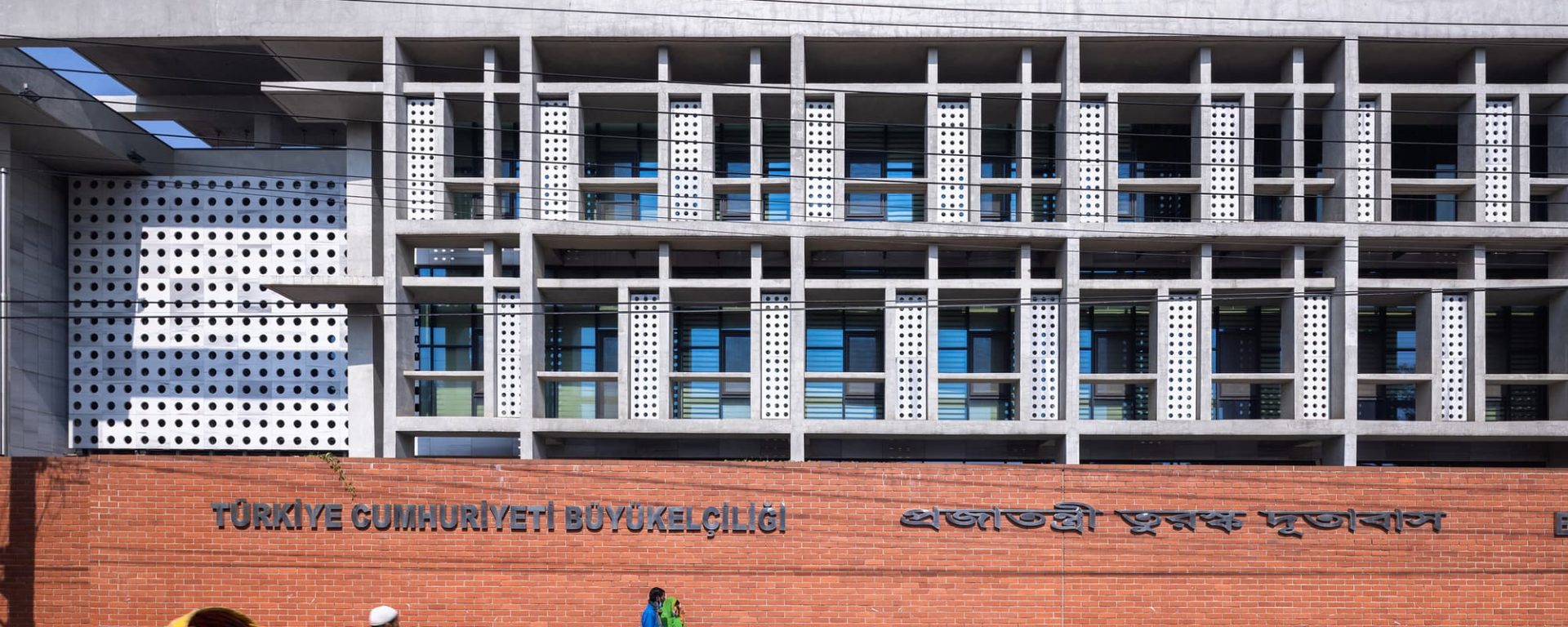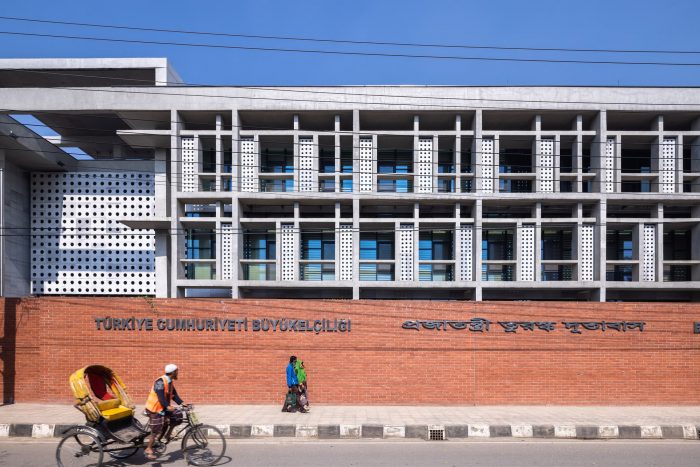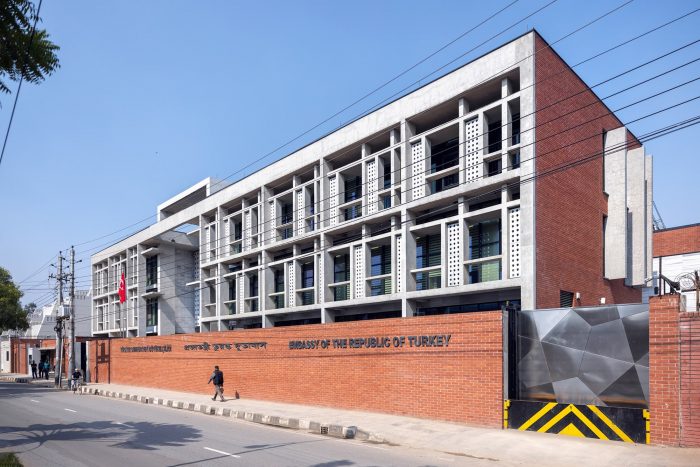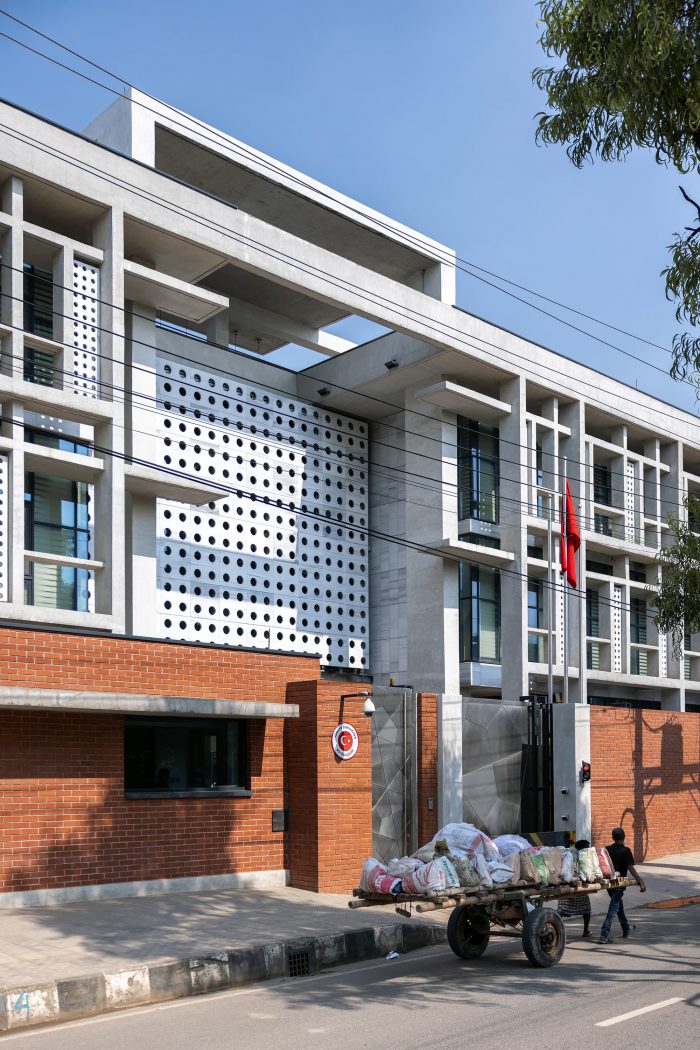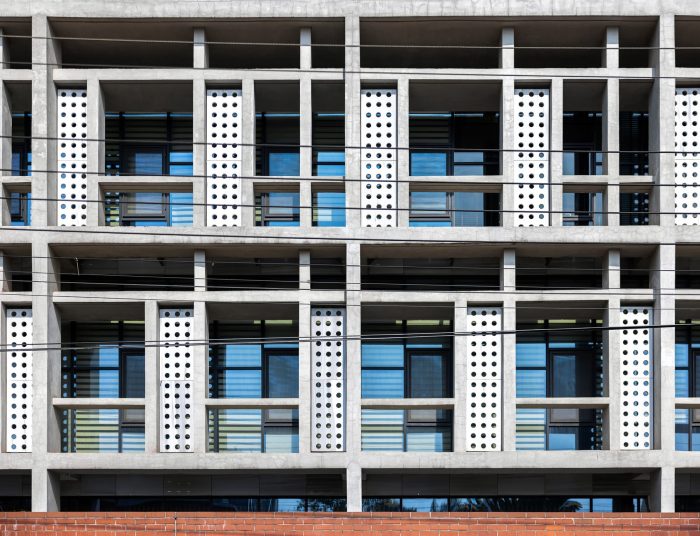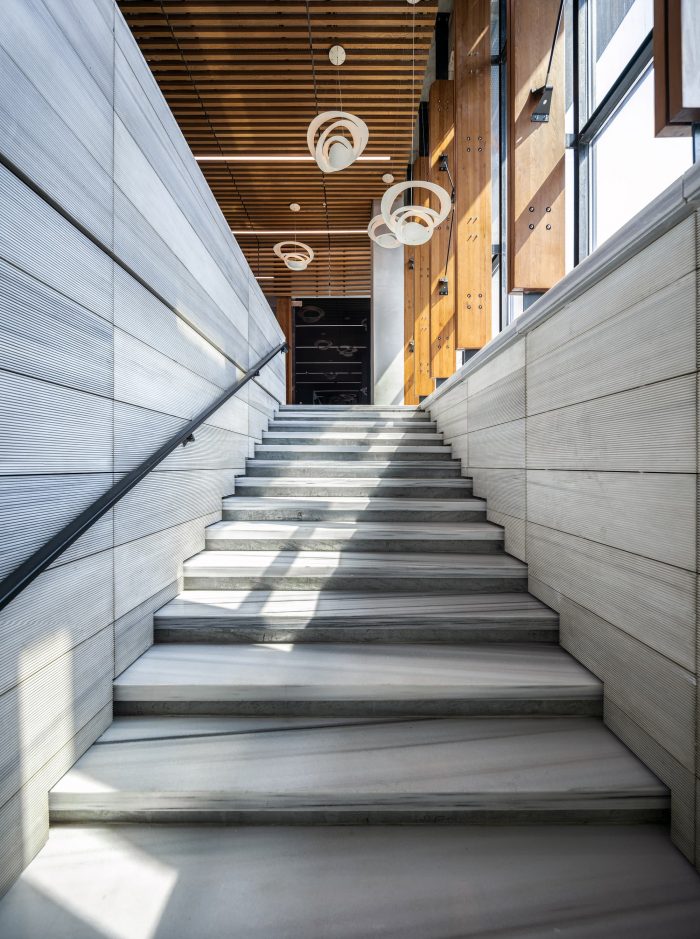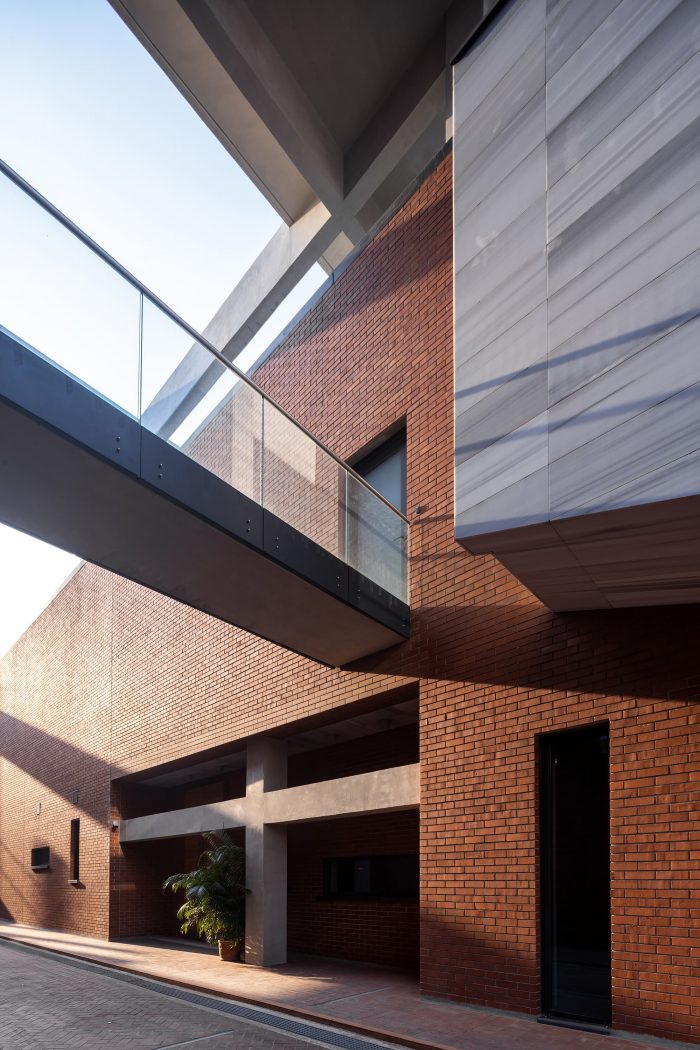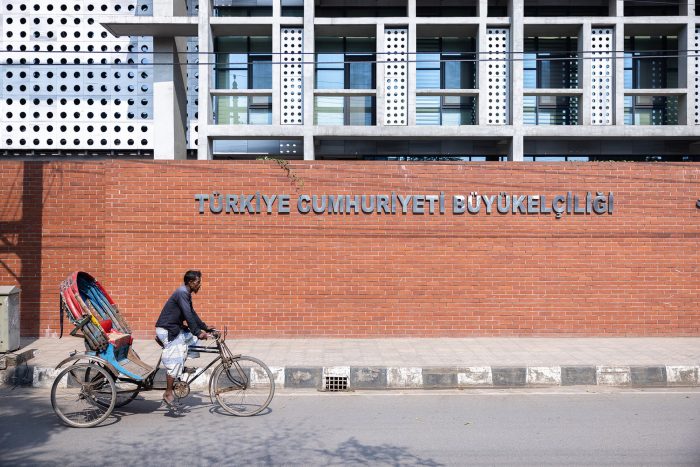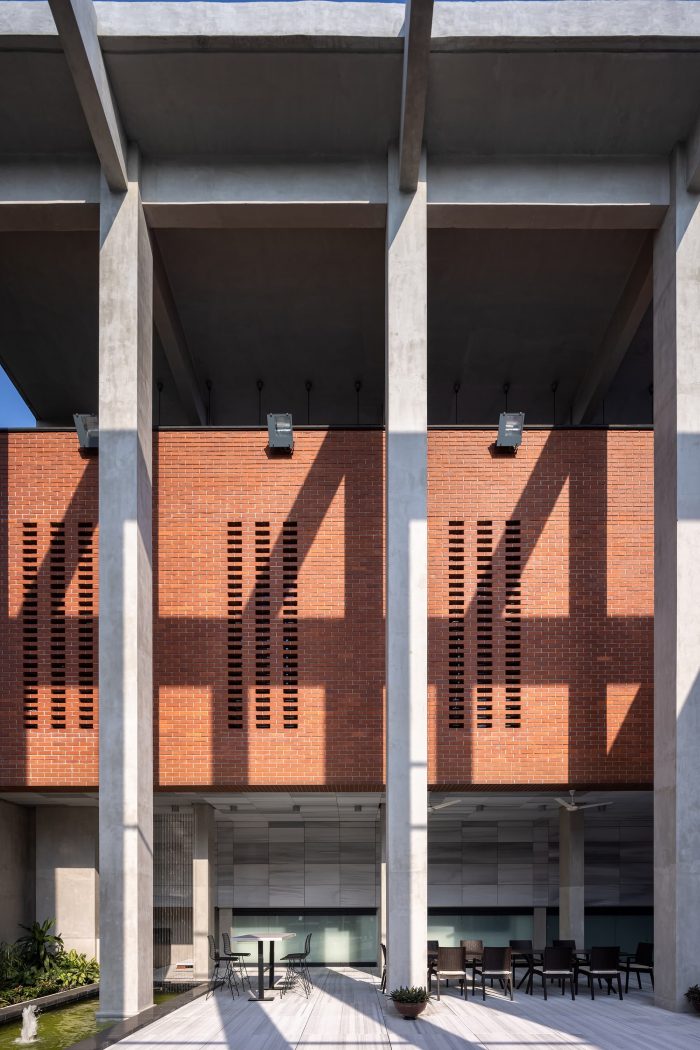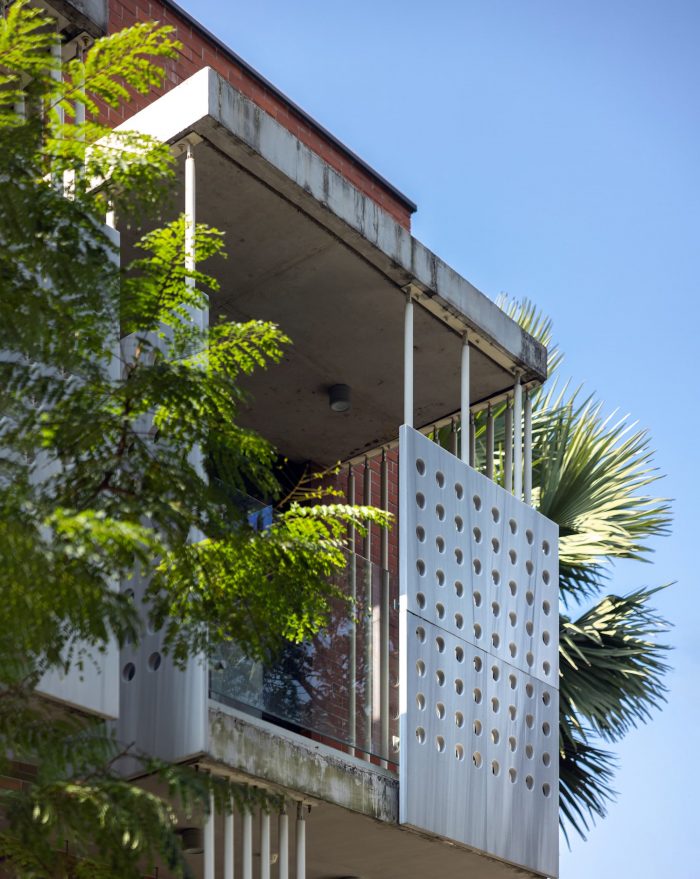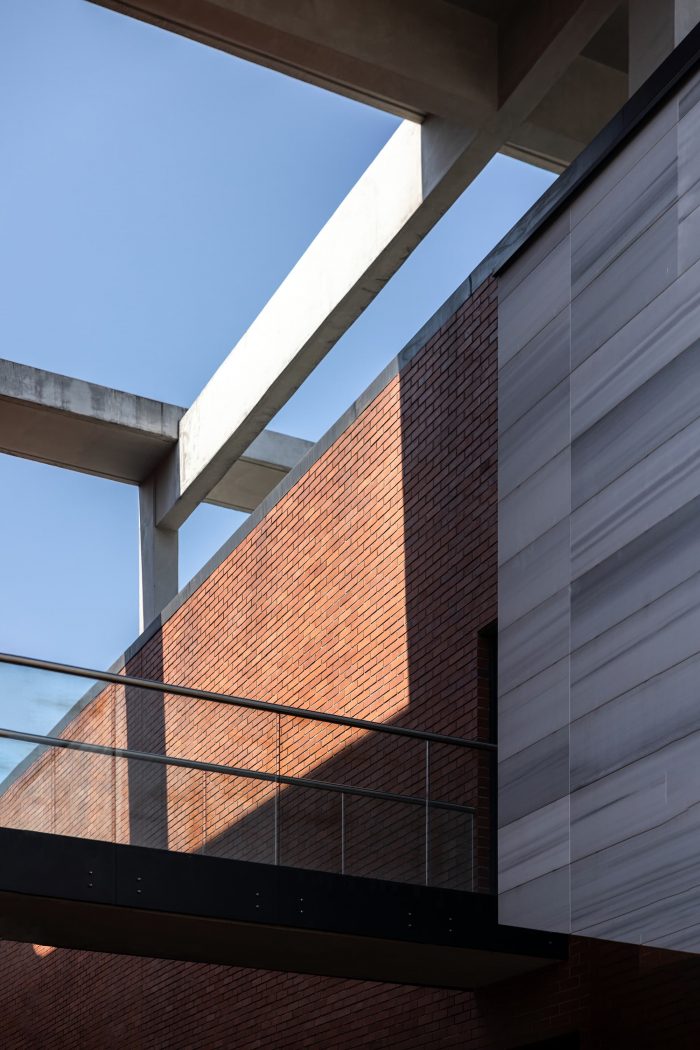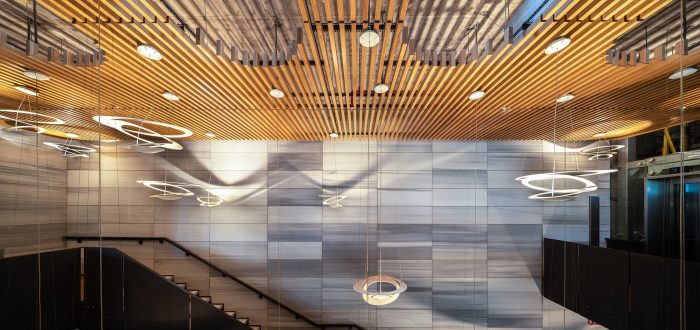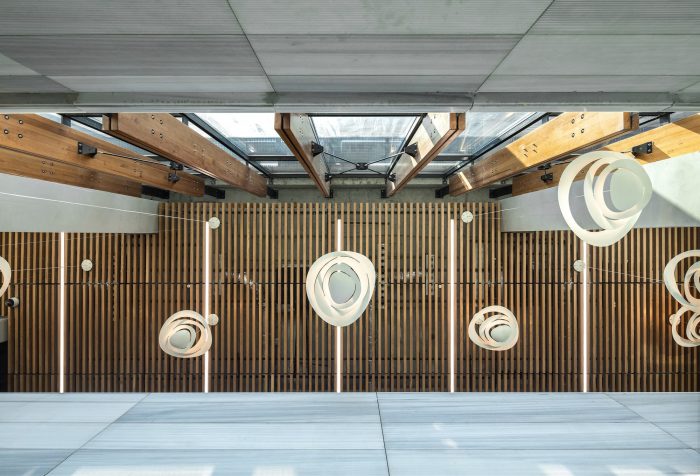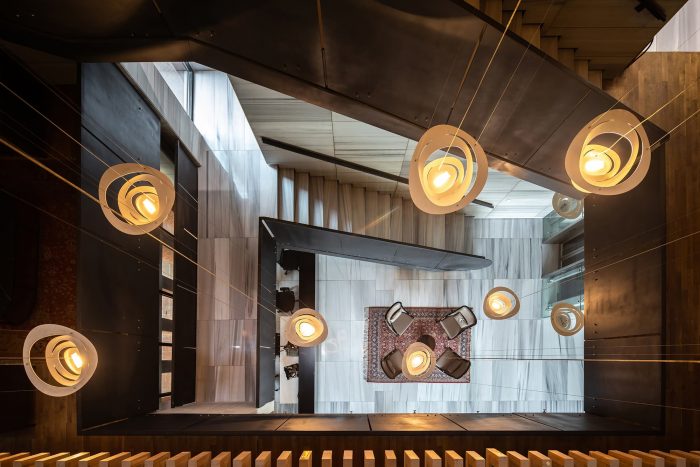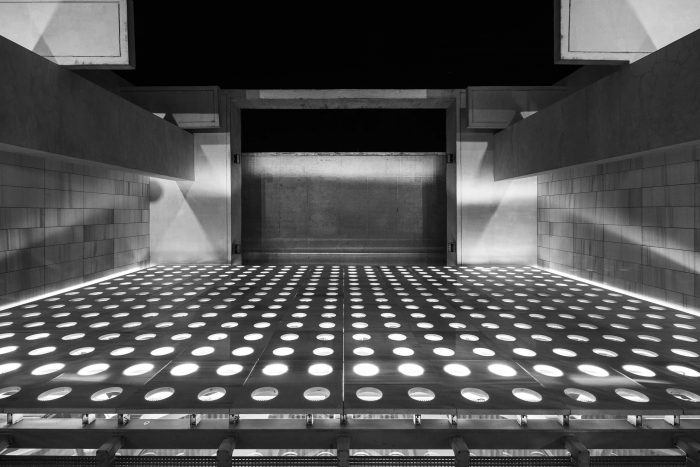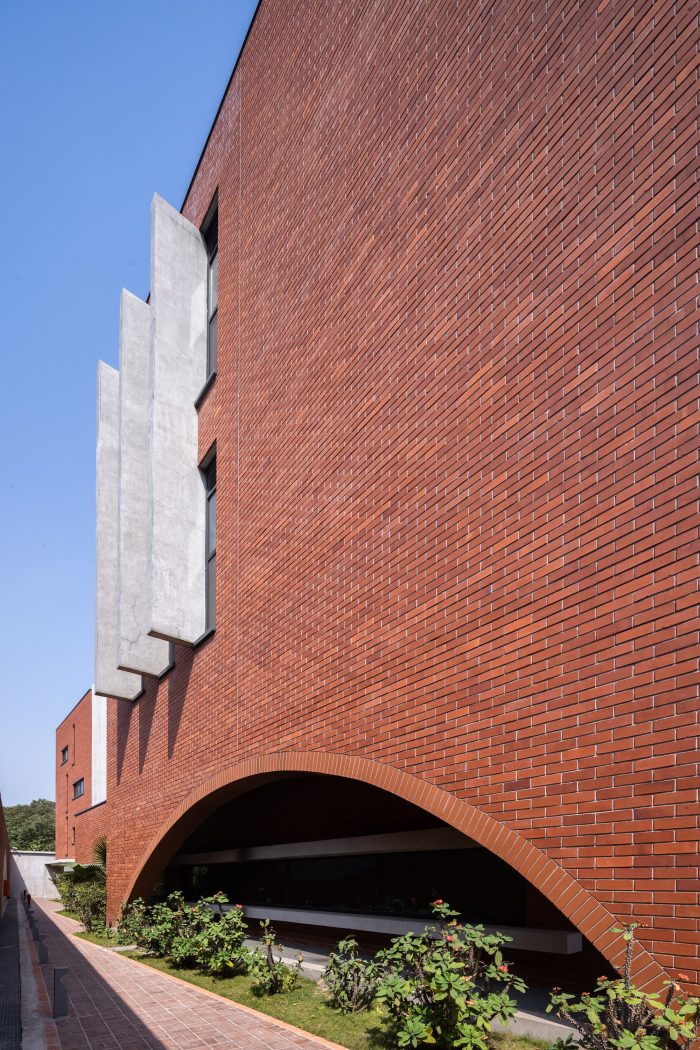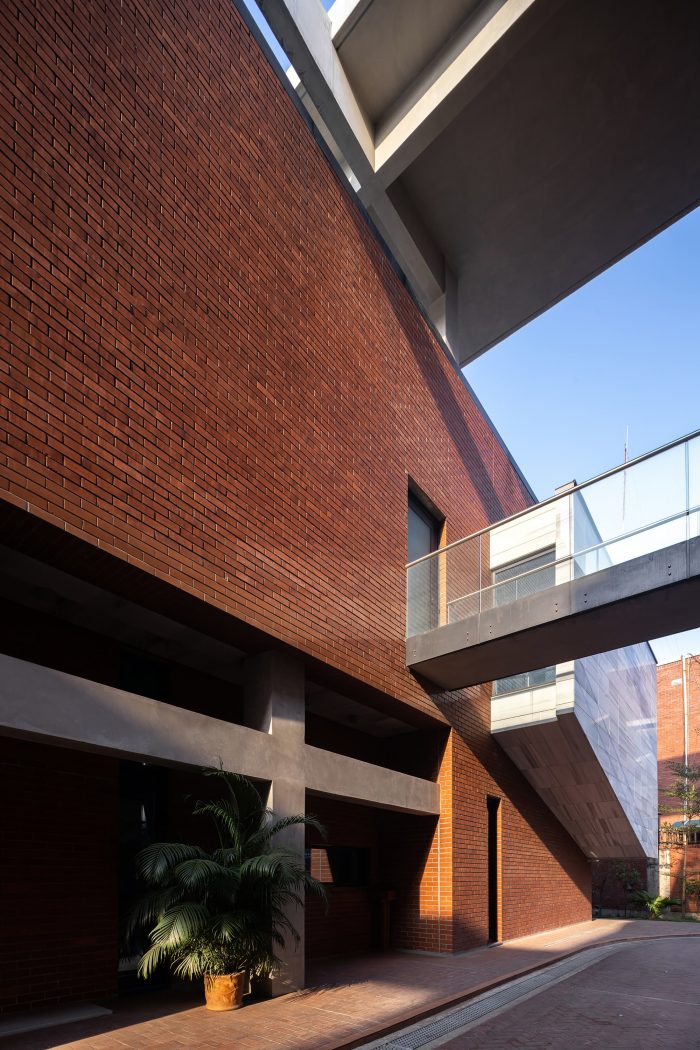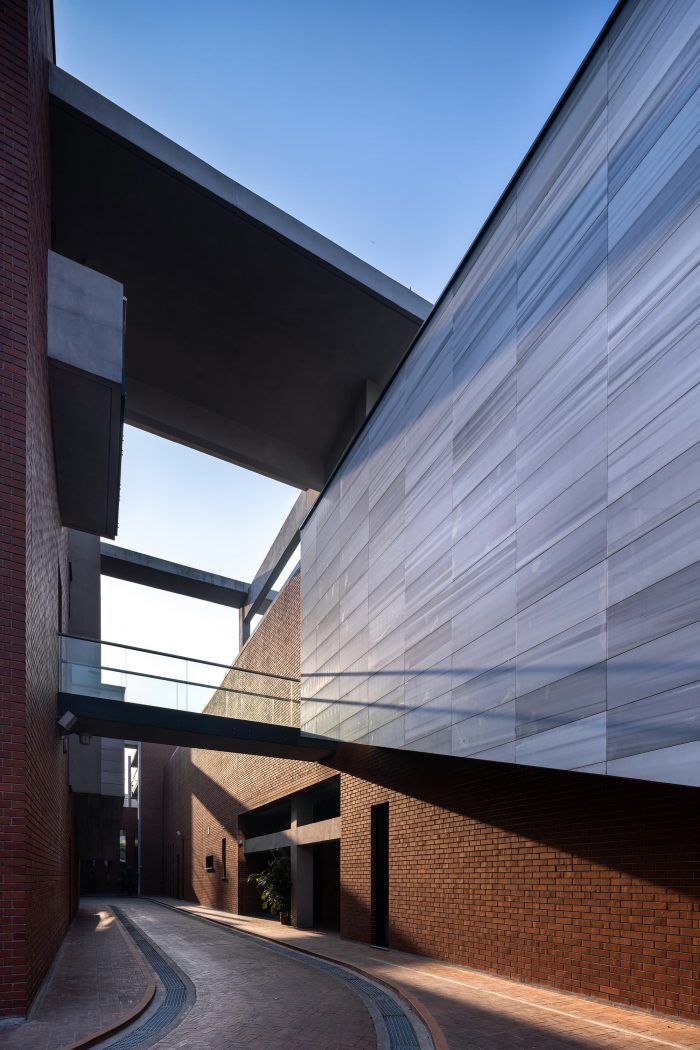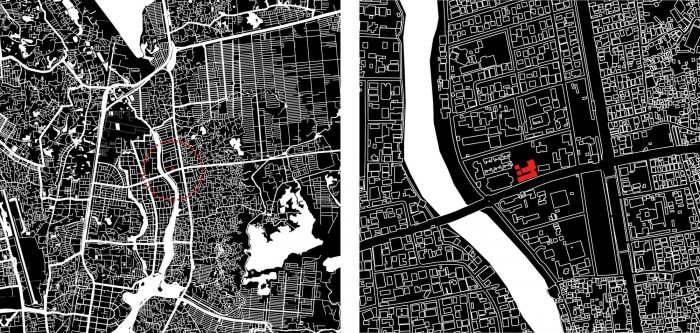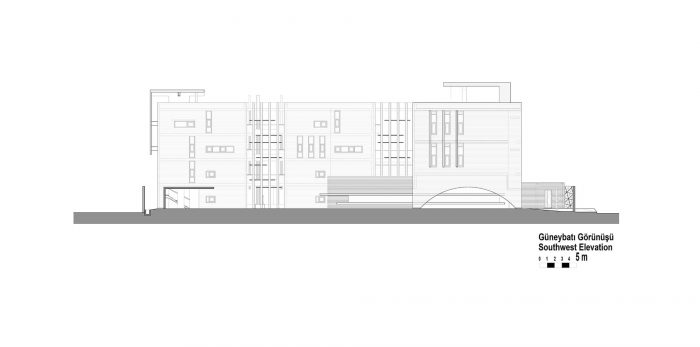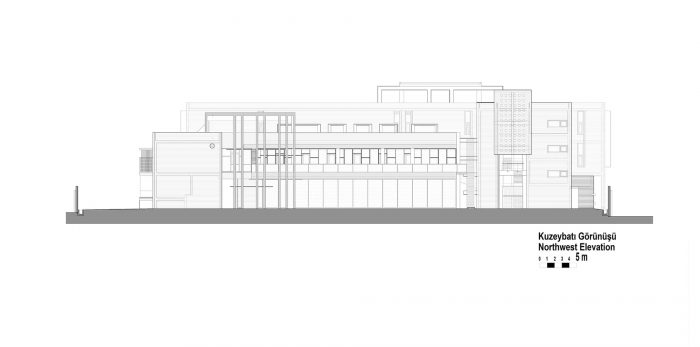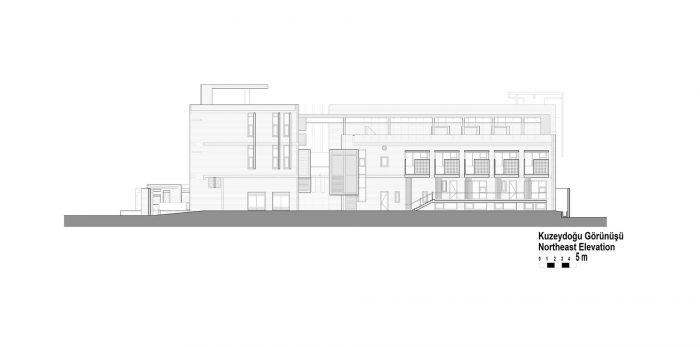土耳其共和国驻达卡大使馆的结构位于一个被保留为外交区的主要道路上。它所处的地块一侧与大韩民国大使馆相邻,另一侧与沙特阿拉伯王国大使馆相邻,还有路对面的加拿大和美利坚合众国的大使馆。与相邻的使馆相比,土地面积较小,要求方案内容密集,可以说是项目过程中的挑战之一。该方案主要包括领事馆、大法官办公室、大使官邸、接待室、住宿和客人住宿单元。由于土地的大小不适合用零散的方案来解决密集的要求方案,因此,具有不同流通关系、隐私和安全需求的用户群被相互分离,在一个焦点结构中解决。
The structure of the Embassy of the Republic of Turkey in Dhaka is located on the main road of a district reserved as the Diplomatic Site. It resides on a plot that neighbors the Embassy of the Republic of Korea on one side, and the Embassy of the Kingdom of Saudi Arabia on the other, as well as the Embassies of Canada and the United States of America across the road. The smaller land size in comparison to the neighboring embassies and the intensive content of the requirements program can be considered as one of the challenging aspects of the project process. The program mainly includes the consulate, chancery, ambassador’s residence, reception rooms, lodgment, and guest accommodation units. As the size of the land is not suitable for solving the intensive requirements program with a fragmented scheme, the user groups with different circulation relationships, privacy, and security needs are separated from each other and resolved in one focal structure.
这个项目叙述的开始可以被认为是建筑师对达卡的访问,因为它有鼓舞人心的参考价值和当地特征的真实性。气候以及该地区的主要材料,在为设计设定主要意象方面发挥了指导作用。由于认识到热带气候的露天生活习惯是重要的文化数据,庭院、覆盖物、街道、阳台、露台、砖顶和天棚等户外特征通过重新解释塑造了主要意象。同时,”有顶的户外 “特征被用来将半开放空间的解释融入设计中,以适应这种气候的季节性降雨的庇护需求。当所有这些方面转化为设计时,街区的体验在综合体中得到了重新诠释,所提到的元素在结构的整体体积中起到了决定性的作用。开放式和有顶棚的街道设置、明确的通道和精心设计的流通空间,在考虑到其规模的情况下,在一个没有分割的地块中为用户提供了多方面的感觉。
The start of this project’s narrative can be considered as the architects’ visit to Dhaka due to its inspiring references and the authenticity of the local features. The climate, along with the dominant material in the region, played a directing role in setting up the principal imagery for the design. Recognizing the open-air living routines of the tropical climate as important cultural data, the outdoor features such as courtyard, covering, street, balcony, terrace, brise-soleil, and canopy have shaped the principal imagery through re-interpretation. At the same time, “covered outdoor” features are utilized to integrate the interpretations of semi-open space into the design to accommodate the need for shelter from this climate’s seasonal rainfalls. When all these aspects translate into the design, the neighborhood experience is re-interpreted within the complex, and the elements mentioned play a defining part in the overall volume of the structure. Open and covered street set-ups, defined passages, and meticulously designed circulation spaces offer a multifaceted sense to the user in an otherwise unsegmented plot considering its size.
设计的出发点是将私人空间和外部使用区域安排在一个院子周围,彼此分开,但又是一个过渡性的设置。住宅和客人住宿单元被放置在院子的外围,而向花园开放的接待室被规划在住宅区的下面。尽管该结构被认为是一个单一的大体量,但按照这个规划方案,每个单元的隐私和与其他单元的明确关系都被追求,它实际上变成了一个紧凑的小型建筑群,有自己的循环、露台和屋檐。群众的棱镜形式被丰富了建筑元素,在尖锐的阳光下创造了光影游戏。庭院元素完全成为一个可渗透的设置的重心,其中各单元的相互关系变得错综复杂。建筑物所代表的土耳其共和国历史上的物品,如iwan和王冠门,已经被分离出来并被重新诠释,以赋予建筑一个当代的和独特的身份。
The design rises with the arrangement of the private spaces and the areas of external use around a courtyard, separate from each other but in a transitive set-up. The residence and guest accommodation units are placed within the periphery of the courtyard, and the reception room that opens out to the garden is planned under the residence area. Even though the structure is perceived as a single and large volume, following this plan solution where each unit’s privacy and its defined relationships with other units are pursued, it actually turns into a compact complex of smaller buildings with their own circulations, terraces, and eaves. The prismatic forms of the masses are enriched with architectural elements that create light and shadow plays under the sharp sunlight. The courtyard element utterly becomes the center of gravity of a permeable set-up where the interrelations of the units get intricate. Items from the history of the Republic of Turkey that the building represents, such as iwan and crown gates, have been isolated and re-interpreted to give the building a contemporary and unique identity.
在建筑中,材料的构成在构建空间身份和记忆方面具有重要作用。在土耳其共和国驻达卡大使馆中,安纳托利亚特有的马尔马拉大理石和达卡特有的当地材料–砖的共存,将它所代表的国家和它所在的国家融合在一个确定的体积中。由裸露的混凝土、白色大理石和红砖组成的材料剧目的简洁性形成了一种构造,通过语言的统一将不同的项目融合在同一个屋顶下。
In architecture, the composition of materials has an important role in constructing a spatial identity and memory. In the Embassy of the Republic of Turkey in Dhaka, the coexistence of the Marmara Marble unique to Anatolia, and the brick which is a local material unique to Dhaka, merges the country it represents with the country it is located in a defined volume. The conciseness of the material repertoire consisting of exposed concrete, white marble, and red brick forms a tectonic that fuses this structure combining different programs under the same roof through language unity.
Architects: Uygur Architects
Area : 6146 m²
Year : 2020
Photographs :Asif Salman
Structure Engineers : Prota
Mechanical Engineers : Bahri Türkmen Engineering Consulting
Principal Architects : Semra Uygur, Özcan Uygur
Project Team : Necati Seren, Güliz Erkan, Hüseyin Atakan, Seda Kaplan
Electrical Engineer : Hasan Sinan Oktay
Sub Structure : Barbaros Bıçakçı
Consultant : Prof. Dr. Aydan Balamir
City : Dhaka
Country : Bangladesh

